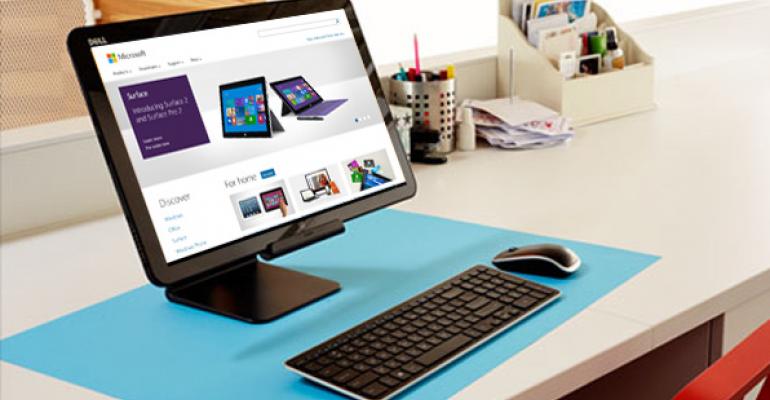Back in August, I wrote that Microsoft had hit the RTM (now "release to manufacturers") milestone for Windows 8.1 without actually finishing the code for the new OS version. This time around, Microsoft would add a number of fixes to the OS, significantly changing the so-called "final" build of Windows 8.1 between RTM and the General Availability (GA) release set for October 18. And they've done that: Here's a small peek at the changes added by something called Windows 8.1 GA Rollup A.
You should read RTM: What's In a Name? to understand how Microsoft has changed the meaning of RTM. In that post, I noted that Windows 8.1 was not complete when it hit the RTM milestone. Instead, Microsoft would use the time between RTM and GA to "optimize the overall [Windows 8.1] experience for customers" and "put the finishing touches on Windows 8.1 to ensure a quality experience at general availability on October 18th." Windows 8.1 GA Rollup A is the result of that work.
Or, perhaps, it is one result of that work. As the name suggests, there could be other fixes I haven't seen yet—perhaps a Windows 8.1 GA Rollup B is in the works as well. Also unclear is when Microsoft intends to ship this (and perhaps any other) update to customers, though I was told earlier in the summer that that would happen with a few days of GA, and occur through the normal Windows Update channels.
Anyway, Windows 8.1 GA Rollup A is what's called a Quick Fix Engineering (QFE) update. In addition to providing it to end users through Windows Update, Microsoft will also deliver it to PC makers so that they can add this code to new PCs before launch. So it won't come as any surprise that GA Rollup A isn't even that new: Microsoft finished it about a month after RTM. (Which is another reason I wonder if there's a GA Rollup B floating around out there.)
So. What changes when you install this update?
There are two answers to this question. Everything. And almost nothing.
Let me tackle the second one first: When you install GA Rollup A and reboot, Windows 8.1 looks and acts almost exactly as it did before. I had a hard time finding any substantial user experience changes at all. In fact, the only thing I've really noticed is that Internet Explorer 11 picks up a new app bar preview—it's that tiny black sliver at the bottom in the shot below—similar to the app bar previews we see in the new versions of Mail, Calendar, and a few other Windows 8.1 apps.

With regards to the first part—"everything"—a careful examination of what's changed in Windows 8.1 after installing GA Rollup A indicates that Microsoft has touched virtually every part of the OS with this update. Given the size of the update—about 200 MB for the x64 version, though the x86 and ARM versions are even smaller, at roughly 100 MB each—there are no major changes, of course. But it's like Microsoft left no stone unturned. This is quite clearly a fit and finish release, and the list of components that are updated by this QFE is lengthy.
Among the updated components—there are 658 updates packages in all—are Common Foundation (low-level features like the NT kernel and hardware abstraction layer), Secure Startup, Smart Cards, Internet Explorer (internal), Printing, Shell, Tech Services Framework (Accessibility), Graphics Core, DWM, App Compat, DirectX, .NET, PowerShell, JScript 9, Windows Recovery Environment (WinRE), Tablet PC Input Panel (TIP), Windows Location Service, Hyper-V, Bluetooth, VPN, Tethering, Windows Image Photo Codecs, Search, AppX, Windows Reader, Windows Media Viewer/Lock Screen Camera, Remote Assistance, Windows Webcam Experience, Windows Defender, WinPE (Windows Preinstall Environment), and Windows Store. Heck, even Windows Journal and Media Center were updated in some way—relax, Media Center fans, I'm sure it's just bug fixes—which shows you the extent of the changes.




